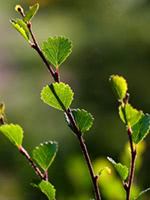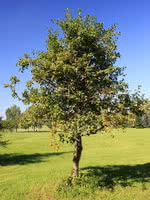Mon-Fri 9am - 5pm Mountain time
Washington Hawthorn vs Bog Birch
Betula pumila
Crataegus phaenopyrum
NOT AVAILABLE THIS SEASON - MIGHT RETURN
CUSTOM GROW
Bog Birch is a hardy, deciduous shrub native to North America. It thrives in wetlands, riparian zones, and boreal forests, and can be found as far north as the Arctic Circle—making it one of the few woody plants to grow in such extreme climates.
In Western Canada, it is especially common in moist lowlands, along streambanks, and in peatlands. Beyond its ecological role in stabilizing soils and supporting wildlife, Bog Birch is frequently used in reclamation and restoration projects due to its resilience and ability to establish quickly in disturbed or degraded landscapes.
Note: We use Bog Birch for Betula pumila. This species is also known by many other common names, including Dwarf Birch, Swamp Birch, and others. Please confirm the scientific name to ensure you are ordering the correct plant.
Washington Hawthorn is an attractive ornamental shrub that is dense enough to plant as a privacy screen. It produces clusters of white blooms in late spring to early summer.
Washington Hawthorn's red berries last throughout winter, bringing squirrels and birds to your property. In the fall, its foliage turns beautiful orange, scarlet, or purple.
One of the most overlooked trees on the prairies. This tree is often used as rootstock, a wildlife attractor, or a boulevard hedge. Give this one a second look.
This species is also known as one of the more salt-tolerant species for those with saline soils.
Please note: this plant is poisonous to dogs.
Bog Birch Quick Facts
Washington Hawthorn Quick Facts
In row spacing: 0.9 m (3 ft)

